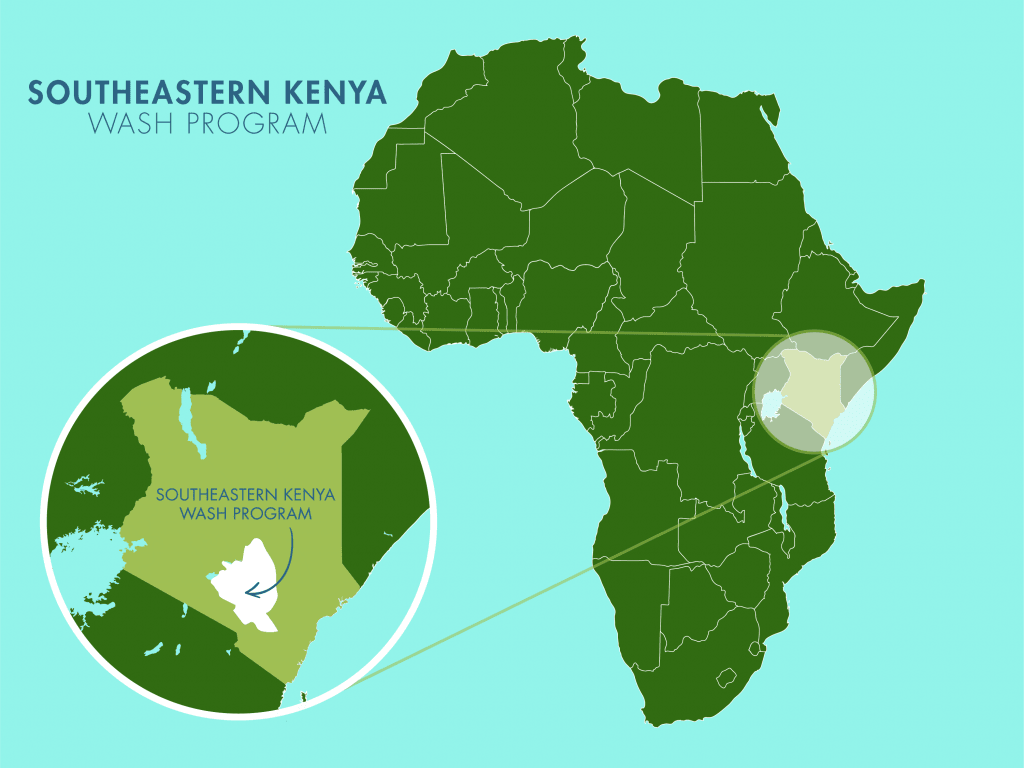In the hot, dry area around the Lenza Community, there is no nearby water source for the 700 people who live there. Water scarcity has long defined the rhythm of daily life. Residents brave the scorching sun to reach distant water sources — but the trip, which takes hours, leaves little time for farming, school, or household responsibilities.

The only available water sources — a protected shallow well and an unprotected dug well — are difficult to access and inadequate to meet the community’s needs. Worse still, water from the unprotected source is frequently contaminated with animal waste and debris, leading to outbreaks of typhoid and amoebiasis.

An open, unprotected well where Lenza collects water.
Lenza Kimanzi, a 34-year-old mother and farmer, consistently faces the consequences of not having sufficient water to meet her daily needs, which limits her ability to care for her family.
"Without water, life is very difficult and unbearable. I wouldn't be able to cook for my children, get them water to drink, work on hygiene, grow crops, or keep livestock. My entire livelihood depends on water availability. It would be difficult to cater to my children's needs, like education, shelter, and clothing, without water to grow my crops and my animals to drink," shared Lenza.
One of the most severe consequences for Lenza and her family is the effect of consuming contaminated water.

Lenza collects water from the unprotected well.
"One of my children complained of stomach pains almost a fortnight ago, and I had to take him to Mwingi Hospital for treatment. I had to pay for a motorcycle to carry us there, then offset the medical bill. I could not do much on that day as I focused all my efforts on ensuring he got the necessary treatment," she recalled. He had to be diagnosed by the doctor who prescribed medicine to buy at the pharmacy. This entire process costs money, which is difficult to acquire, especially since I earn very little from my farm," she lamented.
"I could not go to the farm, herd my livestock, or conduct household duties when my son was sick. He could not go to school while he underwent treatment. I think it is an unfortunate moment for all of us; however, we do not have many options to choose from," she continued.

Paying for unexpected medical expenses drains Lenza's already limited resources and puts her further behind in providing for her family. Until she and her family have access to a reliable, safe water source closer to their home, life will continue to be a challenge.
We hope to offer a solution that brings water closer by installing a sand dam with an attached well, allowing people to collect water. Hopefully, a nearby water source will allow Lenza to regain her time and energy and build up her resources to create a brighter future for her family.
Solving the water crisis in this community will require a multifaceted system that will work together to create a sustainable water source that will serve this community for years to come.
Note: Our proposed water point can only serve 300 people per day. We are working with the community to identify other water solutions that will ensure everyone has access to safe and reliable drinking water.
Steps Toward a Solution
Our technical experts worked with the local community to identify the most effective solution to their water crisis. Together, they decided to construct a protected dug well and sand dam.
Protected Dug Well Near A Sand Dam
Once a sand dam is installed and has time to mature by gathering sand and silt, groundwater increases significantly in the entire area surrounding the project. This provides a reliable source of groundwater that wasn’t possible before. As a result, wells can be constructed to take advantage of the water stored and filtered in the collected sand.
During the construction of the protected dug well, we will build a platform for the well and attach a hand pump. The community will gain a safe, enclosed water source capable of providing approximately five gallons of water per minute.
This protected dug well will be connected to a sand dam to obtain water.
Community Education & Ownership
Hygiene and sanitation training are integral to our water projects. Training is tailored to each community's specific needs and includes key topics such as proper water handling, improved hygiene practices, disease transmission prevention, and care of the new water point. Safe water and improved hygiene habits foster a healthier future for everyone in the community.
Encouraged and supported by our team's guidance, the community elects a water user committee representative of its diverse members. This committee assumes responsibility for maintaining the water point, organizing community efforts, and gathering fees to ensure its upkeep.

 Protected Dug Well
Protected Dug Well
 Rehabilitation Project
Rehabilitation Project


















